MHR
MANUFACTURED HOUSING REVIEW

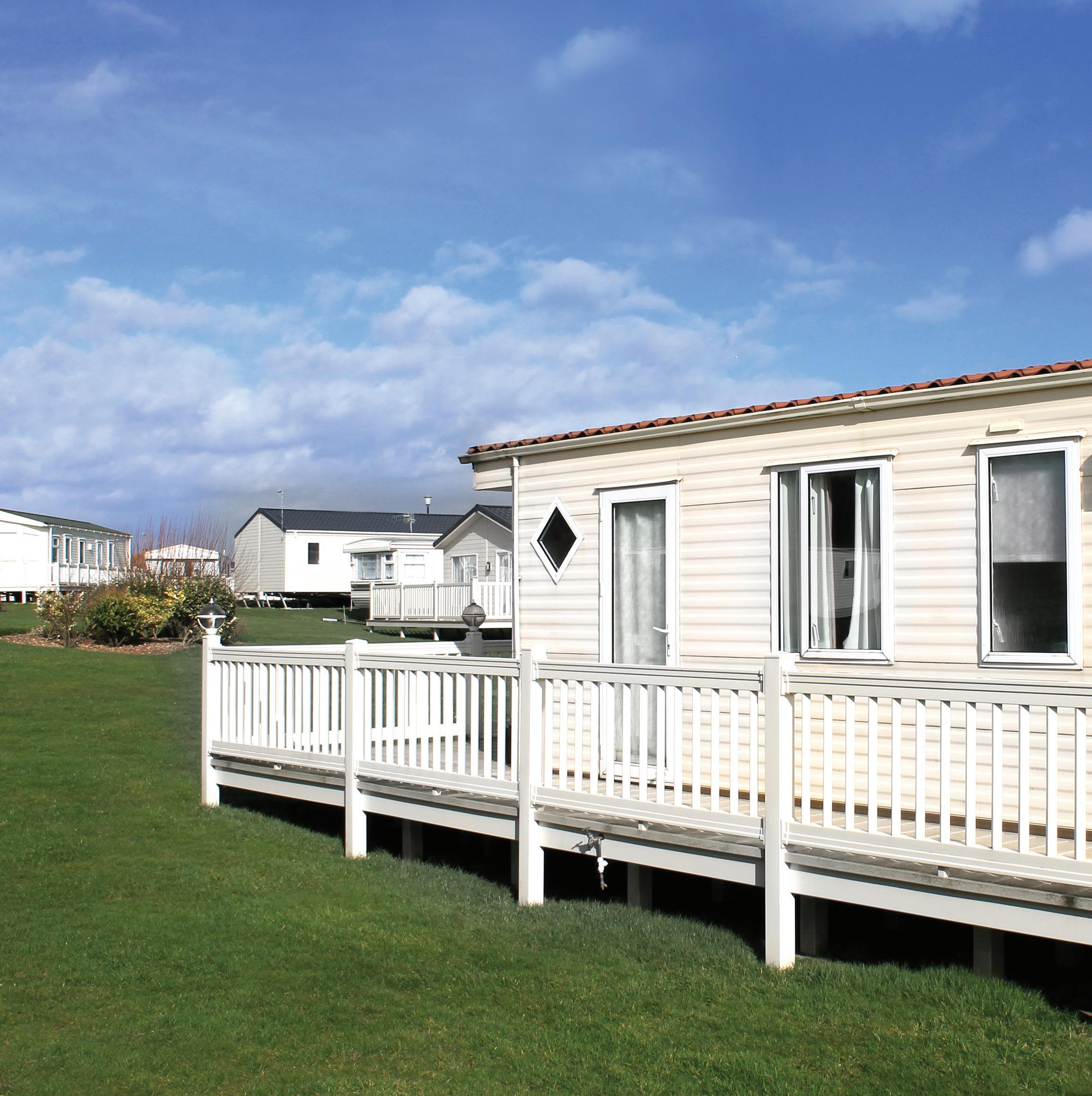
News and educational articles to help you run your business in the manufactured home industry.
Sponsored by:
IN THIS ISSUE:
Importance of Rental Approval Standards
Freddie Mac Unwittingly Proves Its Own Failure State Listings, Inc. Launches MHAuthority.com

Is the Community Owner Responsible when 911 Can’t Get There in Time?
... and much more!
2021 | Quarter 3
Table of Contents “MHI’s Key Updates from Washington DC” 3 By Manufactured Housing Institute State Listings, Inc Launches MHAuthority com 5 By Dawn Pfaff Southeast Community Owners Association’s Veteran’s Assistance Fund Bolstered by Bakers 6 By Manufactured Housing Review Staff New Ohio Law Advocated by OMHA Now Exempts Retailers from THE OHIO SAFE ACT 7 By Oregon Manufactured Housing Association (OMHA) Is the Community Owner Responsible when 911 Can’t Get There in Time? 8 By Mark J. Fletcher, ENP Freddie Mac Unwittingly Proves Its Own Failure 10 By Mark Weiss Mid-year Financing Perspectives 13 By Wells Fargo Multifamily Capital CESA Releases First National Study of Solar for Manufactured Homes 16 By Samantha Donalds Landlord and Tenant Law Change Requires ‘HABITABILITY’ 18 By J. D. Harper “Industry Advocacy Group Against Solar Energy Mandates for Manufactured Homes” 20 By MHARR Importance of Rental Approval Standards 21 By Angie Diedrich Definition of a “Contractor” Shrinks While the Definition of an “Employee” Expands 22 By Kurt D. Kelley, J.D. Supply-Side Factors Weigh on Texas’ Manufactured Housing Industry Optimism 24 By David Jones National Tenant Eviction Moratorium Halted 25 By Manufactured Housing Review Staff
“MHI’s Key Updates from Washington DC”
HUD Secretary Fudge Reaffirms Her Commitment to Manufactured Housing

Senators from both sides of the aisle questioned HUD Secretary Marcia Fudge about manufactured housing today during a U.S. Senate Banking Committee hearing about housing and infrastructure. In her responses, Secretary Fudge reaffirmed she is a “strong proponent” of manufactured housing and that it is “affordable, resilient, energy efficient and something we should do more and more of.”
In advance of today’s hearing, MHI worked with members of the Senate Banking Committee to have manufactured housing a key topic of discussion.

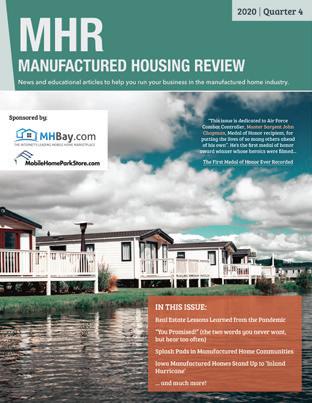

During an exchange with Senator Tim Scott (R-SC) about implementing the requirement that localities consider manufactured housing as a part of their comprehensive housing affordability strategies and community development plans, Secretary Fudge stated they are “working on it as we speak” and should have something published by the end of this year. In response to Senator Scott’s remarks about the resiliency of today’s manufactured homes and making them more accessible to homeowners, Secretary Fudge stated, “we will get right on it.”
In response to Senator Kyrsten Sinema’s (D-AZ) remarks about the role manufactured housing plays in addressing ongoing housing supply challenges, Secretary Fudge acknowledged that manufactured homes are an option that “we too seldom look at” and reiterated that today’s manufactured homes are “affordable, resilient, energy efficient and something we should do more and more of...it is just a good option.” Secretary Fudge also discussed the importance of tax credits to help bridge the gap between the cost of housing and making it more affordable for people to purchase a home.
Click here to watch the Senator Scott/Secretary Fudge exchange. Click here to watch the Senator Sinema/Secretary Fudge exchange.
- 3 -
SUBSCRIBE! Manufactured Housing Review Magazine www manufacturedhousingreview com staff@manufacturedhousingreview com
Reps. Axne, Khanna Reintroduce Bills about Manufactured Housing Communities

Representatives Cindy Axne (D-IA) and Ro Khanna (D-CA) have reintroduced two bills that would impact manufactured housing communities. The first bill, known as the “Manufactured Housing Community Preservation Act,” establishes a $200 million grant program at HUD for the acquisition and preservation of manufactured housing communities. Under the program, any entities who receive the grants are required to keep, manage, and maintain the property for at least 20 years and include oversight provisions to ensure rents remain affordable for residents. MHI worked with Representatives Axne and Khanna as the legislation was drafted to ensure that for-profit land-lease community owneroperators would be among the eligible entities able to apply for funding under the program. Click here to read MHI’s letter in support of the legislation.

The second bill, titled the “Manufactured Housing Tenant’s Bill of Rights,” requires owners and operators of manufactured home communities financed by Fannie Mae, Freddie Mac, and FHA to guarantee certain protections for their residents. Similar legislation was introduced in the previous Congress but did not move through the process. MHI has been closely following the concerns raised by consumer advocates about the GSEs’ financing of communities and will fight to preserve this important source of financing for our members.
Fannie Mae and Freddie Mac Submit Plans that Backtrack from Progress on Serving Manufactured Housing
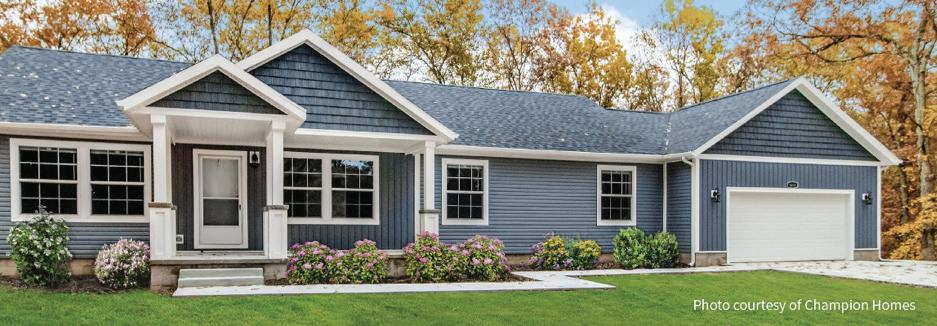
The Federal Housing Finance Agency (FHFA) has released the proposed new Duty to Serve (DTS) Underserved Markets Plans for calendar years 2022 through 2024. The FHFA is soliciting public comments on both the Fannie Mae DTS Plan and the Freddie Mac DTS Plan. Under statute, manufactured housing is one of three identified Underserved Markets –along with affordable housing preservation loans and rural housing – that Fannie Mae and Freddie Mac are required to take proactive steps to serve. However, the submitted plans do not meet that requirement.
Neither plan creates a chattel lending program, which is the intent of the Duty to Serve. The GSEs do intend to increase community funding, but they do so by discriminating against professionally managed communities, in favor of other forms of community ownership. The one positive note is the efforts they are making to increase the volume of manufactured home real estate loans, including programs for the industry’s new class of manufactured homes – CrossMod Homes.
MHI believes FHFA should not allow Fannie Mae and Freddie Mac to abandon efforts to meet the needs of manufactured home buyers. FHFA must hold Fannie Mae and Freddie Mac accountable for meeting their statutory Duty to Serve manufactured housing.
MHI will register our opposition to the Underserved Market Plans, through written and public comments, and advocacy with policymakers. In addition, MHI will engage our members to also weigh in with comments. Click here to read the DTS Plans.
If you have any questions, please contact MHI’s Policy Department at MHIgov@mfghome.org or 703-558-0675.
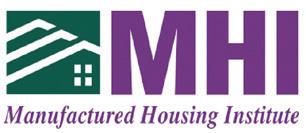
- 4 -
“MHI’s Key Updates from Washington DC” Cont.
State Listings, Inc. Launches MHAuthority.com
Providing a One-Stop Shop for Manufactured Housing Listings
Today, manufactured housing has become an increasingly popular option to home buyers who are looking for economical solutions. As so much of the housing market is unaffordable to many, mobile and manufactured housing provides an affordable option to those who also like the ease and flexibility that mobile homes provide. In response to consumer needs as well as those of mobile and manufactured housing professionals, State Listings, Inc., owner of My State MLS and NY State MLS, recently launched MHAuthority.com, a premier website for manufactured housing listings.
After hearing the needs and challenges that mobile and manufactured housing professionals expressed, State Listings, Inc. created MHAuthority.com to give real-time detailed listing and sales information to the public. MHAuthority.com utilizes direct MLS feeds, which require data to be kept updated. Other similar manufactured housing listing sites don’t include required information, and don’t mandate that the listings be updated.
Manufactured home sellers, builders, dealers and financiers needed a one-stop shop where they could get all the information they need in the most accurate form. MHAuthority. com does just that: It retrieves data directly from agents, dealers and the public, to provide real-time detailed listing and sales information to the public.
Consumers need a minimum amount of information about a manufactured home when they shop online, and MHAuthority.
By Dawn Pfaff
com has the unique, specialized search options to create a better shopping experience and help ideal buyers find mobile home listings and manufactured housing listings.
Although manufactured homes are built to HUD code standards, which can be lower than state code standards, most manufacturers offer upgrades to bring the homes up to state code.
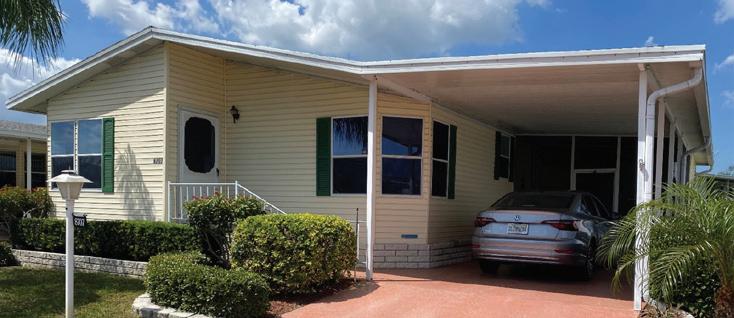
To make doing business better for agents and brokers, MHAuthority.com doesn’t charge them for receiving leads on their listings or getting their own data back. As for dealers, MHAuthority.com provides the specialized fields they need to promote their listings.

Mobile and manufactured housing professionals stated their needs, and MHAuthority.com listened. The manufactured housing market is booming, and MHAuthority.com makes it easy for agents, brokers, dealers, buyers and sellers to get the information they need.

To register, visit www.mhauthority.com
Dawn Pfaff, president and founder of State Listings, Inc., is a technology entrepreneur who has been involved in the real estate industry for the past 20 years from nearly every angle possible; she is an appraiser, agent, broker, dealer for manufactured housing, licensed instructor to teach continuing education and investor. In 2009, Dawn founded NY State MLS to fill a void in the market and offer agents and brokers their own statewide MLS, featuring streamlined listing options, ownership of data and a variety of enhanced tools to fit their unique needs. In 2015, the company expanded to My State MLS in response to a nationwide demand. Today, it covers all 50 states and Puerto Rico with more than 50,000 members, making it one of the largest MLS platforms in the country. The technology platform now offers a full suite of custom solutions, educational services, webinars, and serves as a resource for its members and real estate professionals across the industry.

- 5 -
Southeast Community Owners Association’s Veteran’s Assistance Fund Bolstered by Bakers
In addition to being an outstanding annual education and management event held each year in the Atlanta area, the leaders of SECO (Southeast Community Owners Symposium) set-up a fund to assistant military veterans living in manufactured homes. Veterans can apply to the fund for financial help in repairing and upgrading their homes.
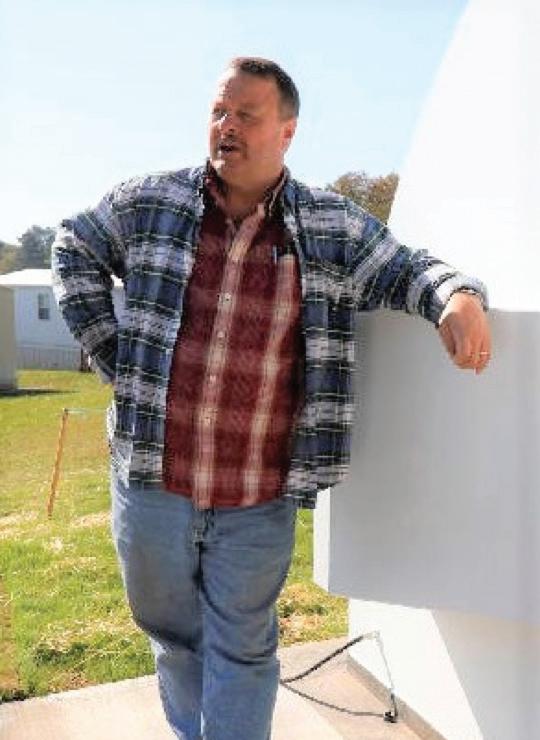
Max and Kathryn Baker, the owners, and managers of the Mobile Home Park Broker based in Atlanta and long time SECO supporters are giving the program a big boost by donating $6,000 to the Fund. Mr. Baker is also a United States Marine.

David Roden, the SECO Veteran’s Fund Manager, reports they are thrilled to have the sizeable contribution. The extra funding has funded repairs to veteran owned homes from Florida to Colorado to date. With construction and repair costs rising dramatically across the country, the assistance is needed more than ever.
Donations to this charitable fund should be made payable to SECO and mailed to P O Box 20256, Atlanta, GA 30325
of the Manufactured Housing Review
- 6 -
Staff
New Ohio Law Advocated by OMHA Now
Retailers from THE OHIO SAFE ACT
OMHA’s advocacy of legislation to remove retail salespeople who do not originate loans from the Ohio SAFE Act was included as an amendment to HB 133 signed into law by the Governor on June 2, 2021. The new law is effective immediately.
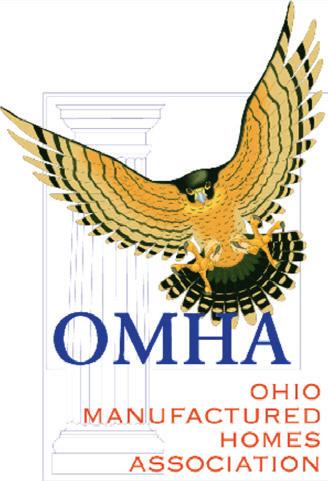
The Ohio law mirrors federal law exempting retailers from loan originator requirements enacted as part of Dodd/Frank, TILA signed into law by former President Trump in 2018.
The Ohio SAFE ACT legislation highlights: Any person engaged in the retail sale of manufactured homes, mobile homes, or industrialized units shall not offer or negotiate the residential mortgage loan rates or terms; however, if, in connection with obtaining financing by others for those retail sales, the person only assists the borrower by providing or transmitting the loan application as follows:
(1). Retailers of manufactured homes and manufactured home park operators may provide any counseling with borrowers about residential mortgage loan rates or terms, to have general discussions with customers about interest rates and fees, typical financing options, and hypothetical loan terms, such as the following:
• Retailers of manufactured homes and manufactured home park operators may assist with the preparation of residential mortgage loan packages, which means compiling loan application materials and supporting documentation.
• Retailers of manufactured homes and manufactured home park operators may provide general instructions to help consumers complete a loan application.
• Retailers of manufactured homes and manufactured home park operators may gather information on the consumer’s behalf, which includes collecting and sharing’s supporting documentation from third parties, so the consumer can submit a completed application to the loan originator or creditor.
• Retailers and community owners can provide customers with a list of lenders available to discuss financing options and/or refer a customer to a lender or recommend a lender if they do not offer or negotiate loan terms on behalf of the lender or customer and if they do not receive any additional compensation or gain for referring the borrower to the lender, including any payment, kickback, referral fee, or anything else of value for the referral. However, they must disclose to the customer in
Exempts
By Oregon Manufactured Housing Association (OMHA)
writing any corporate affiliation with any creditor, and if the retailer does have a corporate affiliation and offers a recommendation, provide referral information for at least one unaffiliated creditor. Retailers/community owners can also discuss share with customers their relationships with specific lenders.
However, keep in mind, current Ohio and federal SAFE Act requirements are still in place for any activity providing loans or extending credit. A community owner can sell a manufactured home and then “hold paper” only if holding the appropriate lending license, as required by state law, and employs licensed Mortgage Loan Originators. SAFE Act Licensing will still be required of community owners or community operators who offer manufactured home leases with an option to purchase, as credit is still considered “financing”.
The Oregon Manufactured Housing Association (OMHA) is a nonprofit trade organization dedicated to educating Oregon’s homebuyers about modern, precision-built manufactured housing and promoting manufactured homes across the Beaver State. Since 1968, OMHA has served the interests of Oregon’s home buying public, helping consumers find the perfect hand-built home or the right community for a home to be located.
The members of OMHA are dedicated to providing safe, affordable, high-performance homes to individuals and families in communities across Oregon. OMHA supports our members with training, continuing education and information — ensuring that the people who design, build, install, sell and finance manufactured homes have access to the best industry practices available.
Manufactured housing is an important source of affordable housing for 22 million households across the country. The factory-built housing industry produces about 90,000 homes a year and contributes around $2.6 billion to the U.S. economy. Every year, about 10% of new homes are built in a factory. Here in Oregon, the supply of affordable, quality housing is shrinking. Modern, manufactured homes offer a solution for Oregon residents seeking a path to sustainable homeownership for their families.
- 7 -
Is the Community Owner Responsible when 911 Can’t Get There in Time?
“This is 911, what is your location?”
240 million times each year, 911 is dialed for emergency help. That equates to a staggering 27,400 phone calls per hour, or over 7 calls per second, 365 days a year. At the other end of the line are a team of 911 Call Takers, that answer these calls, confirm the address, and triage the emergency. For residential or commercial buildings, the location is typically a street address, and easily understood. However, especially with the proliferation of cellular phones, emergency callers are not always at ‘a typical address’, or the reported address covers a large geographic area, making it impossible to accurately locate the person needing help.
Many environments, such as a Manufactured Home Community, may be large tracts of private property made up of private roads. The address of a residence may simply be a common address for the main facility accompanied by a non-descript identifier. Since it is considered private property, similar to a private golf course, the municipality rarely undertakes the expense of documenting these roads into their map solutions, let alone keep up with modifications and changes. Exasperating the situation is the recent phenomenon known as ‘cutting the cord’ where the use of landlines has dropped at alarming rates in exchange for cellular phones.
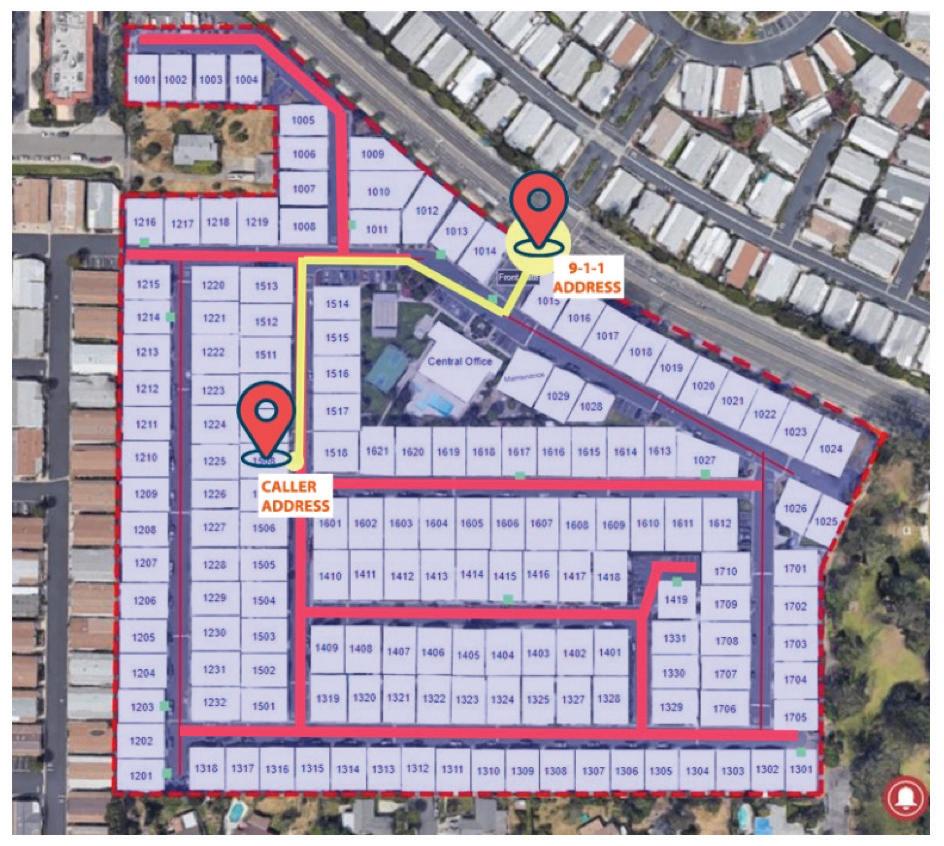
Current Headlines: “Can You Find Me Now?”
Landline 911 calls deliver the telephone number of the caller to the 911 Emergency Call Center (ECC); and matching that number to a street address, based on the physical installation records. Cellular phones have no installation record, and no fixed street address. Citizens often mistakenly assume that Public Safety can easily locate these devices since, “Cell phones have GPS, and the Police can ‘ping’ them to determine their location”. That works fine in movies, but the reality is very different.
The 911 network is blind to the location information of a cellular phone. There is no network connection between the ECC 911 center and the cellular network, and the cellular carrier must be manually queried for that information on a callby-call basis. This results in a dangerous and potentially lifethreatening delay. In a private community containing private roads, hundreds of units may share a common physical address.
 By Mark J Fletcher, ENP
By Mark J Fletcher, ENP
Since many manufactured home residences fall under this problematic category, what is the responsibility of the park or facility management team? In more and more situations, property owners are caught up in litigation, where they are accused of creating an unsafe environment, or permitting one to knowingly exist.
Juries can assign liability based on an owner or landlord’s knowledge of an existing hazardous condition and allowing it to continue, even if the tenant was responsible for creating the condition. In fact, case law is continually increasing and building where tenants are being awarded sizable judgements when such incidents occur.
Fortunately, technological advances now allow community owners to address this 911 location problem with an integrated software platform called Next Generation 911. Ignoring your 911 location issue only creates another liability issue which is viewed unfavorably by juries.
Cellular vs ‘Land Line’ Telephone usage
Data shows upwards of 80% of all 911 emergency calls are placed from a cellular device. Current smartphones utilize handset-based location information when the device initiates a 911 call within a defined boundary and can deliver that information to Next Generation 911 equipped call centers.
- 8 -
This new technology provides highly accurate location detail (down to 1 square meter) along with an intelligent, localized, on-site notification information to emergency responders, as well as to facility staff, who are alerted whenever a cellular 911 call is made from inside the park complex. This is accomplished using a ‘geo-fence’ boundary of the property and enables management to take a proactive role in the response to the problem.
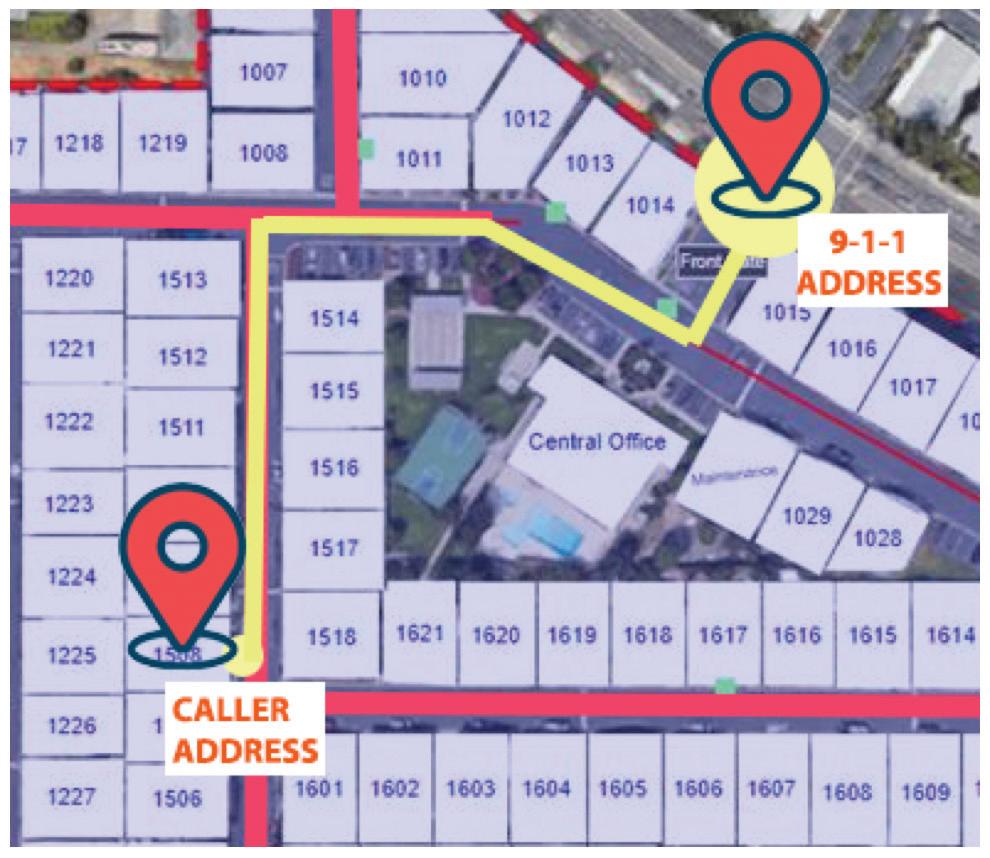
Since geo-fenced based technology can easily be provided to residents at little to no cost or as part of their maintenance charges, it can add local situational awareness and safety, not only to the facility management team, but to residents. With the technology focused on the device level, both residents and non-residents benefit from this highly accurate location service within their community. Additional response policies and procedures can now be defined and put into place to add value. For example, knowing an event response is in progress, staff can provide an escort to emergency service responders, leading them directly to the unit, even assisting with unit access if authorized. This makes “safety services” a significant addition to the current services offered by the property owner / landlord.
Additionally, emergency contact information can be easily provided to public safety responders. Limited or secured access limitations are removed providing a clear path to the specified unit. Alerts only share event location information with the manufactured home community operator and are ‘optedin’ by each resident which eliminates privacy issues. Providing this information and removing access impediments, which eat away invaluable life-saving seconds, gives community owners
and tenants an additional layer of trust, knowing everyone is doing all they possibly can to keep residents safe.

Mitigating Emergency Response and Limiting Liability

The effort to streamline 911 emergency procedures within your community could save lives and dramatically reduce the costly liability exposure facing community owners. Everything proactively done by community owners to make their property safer reduces liability, reduces losses, and improves resident well-being.
Written By: Mark J. Fletcher, ENP VP Public Safety Solutions, 911inform, LLC.
Contact information: Bob
Jones
Senior Associate, The Xeta Group bob@thexetagroup.com 888-908-6357

- 9 -
Is the Community Owner Responsible when 911 Can’t Get There in Time? Cont.
Freddie Mac Unwittingly Proves Its Own Failure
Remember Inspector Renault in the classic film “Casablanca,” who was “shocked, shocked” to find gambling going on at Rick’s? Well, we now have something similar with mortgage giant Freddie Mac. After doing virtually nothing -- along with its cohort Fannie Mae -- for a decade-plus to implement the Duty to Serve Underserved Markets (DTS) mandate with respect to the vast bulk of the mainstream HUD Code manufactured housing consumer finance market, Freddie Mac, in a recent analysis, is “shocked, shocked” to find, of all things, a significant and growing gap between the demand for – and the supply of –affordable “entry-level,” starter housing. But while it diagnoses the problem, it fails to draw the obvious connection between its own anti-DTS policies and the exponential growth of that supply/demand gap, which Freddie Mac warns, threatens the “wealth, health and stability of American communities.”
The analysis, by Freddie Mac Vice President and Chief Economist, Sam Khater, titled “The Significant Shortage of Starter Homes,” was published on April 15, 2021. It makes a number of significant points and observations regarding the American housing market in general, and the market for affordable “starter” homes in particular. Most relevant, though, to DTS, the manufactured housing market and Fannie and Freddie’s joint failure to implement DTS thus far in anything approaching a market-significant manner, is the fact that, as of the end of 2020, the supply of “entry-level” single-family homes in the United States stands some four million units below existing demand. According to other housing experts, such as Edward Pinto and Tobias Peter at the American Enterprise Institute, that gap is actually even larger – something in the neighborhood of eight million units or double the Freddie Mac estimate. But for our purposes, let’s assume that Freddie Mac’s number -- which is bad enough -- is correct. What does this mean for homeownership in America and for affordable, non-subsidized manufactured homeownership in particular, and what can be done to alleviate what Freddie Mac characterizes as “the significant and rapidly widening gap between entry-level supply and [entry-level] demand?”
Ultimately, Freddie Mac’s analysis concludes that the “main driver” of the entry-level housing supply/demand gap, is a “long-term decline in the … supply of entry-level single-family homes, or ‘starter homes.’” (Emphasis added). The analysis thus notes that in the 1970s, “the construction of new, entrylevel homes averaged 418,000 units per year.” During the 1980s, however, that figure fell to an average of 314,000 units per year. The trend of reduced supply continued through the 1990s, with an average of 207,000 entry-level units, and in the 2000s, with an average of 150,000 units per year. Subsequently, during the 2010s, average entry-level housing
By Mark Weiss
supply according to Freddie Mac, declined even further, to an average of 55,000 units per year. “In the span of five decades,” then, the report concludes, “entry-level home construction fell from 418,000 units per year in the late 1970s to 65,000 in 2020.”
The gap between housing supply and housing demand at the “entry level,” consequently, is a long-term phenomenon that has been growing steadily, for decades. As the analysis emphasizes, “very simply, renters can’t buy houses that don’t exist.” Even worse, the analysis predicts that the gap between supply and demand will continue, stating: “[W]e expect the housing supply shortage to continue to be one of the largest obstacles to inclusive economic growth in the [United States]. Simply put, we must build more single-family entry-level housing to address this shortage, which has strong implications for the wealth, health and stability of American communities.” (Emphasis added).
Well, what a shock! Apparently, there is, and has been, a chronic shortfall in the availability of affordable, entry-level, starter homes. How could that happen? And who could have seen that coming? And what a comfort it is to know that Freddie Mac – which along with its sister enterprise, Fannie Mae – after decades of hypocrisy, discrimination and ongoing failure, has at long last “diagnosed” the obvious. But why is there a “starter housing” shortfall and, more importantly, what – if anything -- are Freddie and Fannie doing about it?
The “why” part of the question is easy. There is a shortage of “entry-level,” “starter” homes at least in part because Fannie and Freddie have not provided the necessary level of financing support for that segment of the market – a point that MHARR and others have been making for years. It’s a form of prejudice and bias – a willful “blind spot.” It’s why Fannie and Freddie almost collapsed in 2008 and ultimately had to be bailed-out by American taxpayers. Instead of providing much-needed financing support for lower-cost “starter” homes (such as manufactured homes) that would be affordable for qualified but lower and moderate-income buyers, Fannie and Freddie, for years, catered instead to more well-heeled purchasers, pushing them toward ever-more costly homes that they were barely qualified to finance. When the economic crisis hit in 2007/2008 and interest rates on subprime, adjustable and other “gimmick” loans shot up beyond what the borrowers could afford, the flood of resulting defaults almost sank the good ship Fannie/Freddie. Neither Freddie nor Fannie, however, could be troubled during that period with providing securitization or secondary market support for truly affordable mainstream, non-subsidized manufactured homes.
- 10 -
Congress, fortunately, had no such blind spot. When the credit crisis hit, Congress knew what the problem was, and what to do about Fannie and Freddie shoehorning unqualified or barely qualified borrowers into high-cost homes through gimmick loan products, instead of serving the lower and moderate-income Americans prioritized by their respective charters. With the support of all relevant stakeholders, Congress -- through the DTS directive of the Housing and Economic Recovery Act of 2008 (HERA) -- instructed Fannie and Freddie to actually begin serving fully-qualified but less affluent homebuyers seeking to purchase truly affordable homes within the manufactured housing market (and others). And, not to put too fine a point on it, this was not just a random request or polite invitation by Congress. Rather, it was an affirmative, mandatory command to finally begin serving the affordable, mainstream manufactured housing market in market-significant numbers.
Through DTS, Congress effectively recognized and diagnosed – nearly 15 years ago -- the condition that Freddie and presumably Freddie are only now “shocked” to find. Congress,
quite simply, recognized that the Enterprises were not serving the affordable, entry-level segment of the housing market, and directed them to do so, specifically by providing, among other things, market-significant levels of support for inherently affordable, non-subsidized, mainstream manufactured housing. Full compliance with – and implementation of -DTS, accordingly, on a market-significant basis, would likely have already stopped and reversed the expanding gap between affordable, entry-level housing supply and demand as diagnosed and exposed by Freddie Mac in its April 2021 analysis.
But, of course, more than a decade later, Freddie Mac and Fannie Mae instead of affirmatively serving the mainstream HUD Code market under DTS, are seemingly doing their utmost to evade and avoid their DTS obligations altogether. Some 13 years after the enactment of DTS, then, as MHARR has frequently emphasized, Fannie and Freddie still do not provide any support for the personal property (chattel) loans that constitute nearly 80% of the consumer financing for mainstream HUD Code manufactured homes and
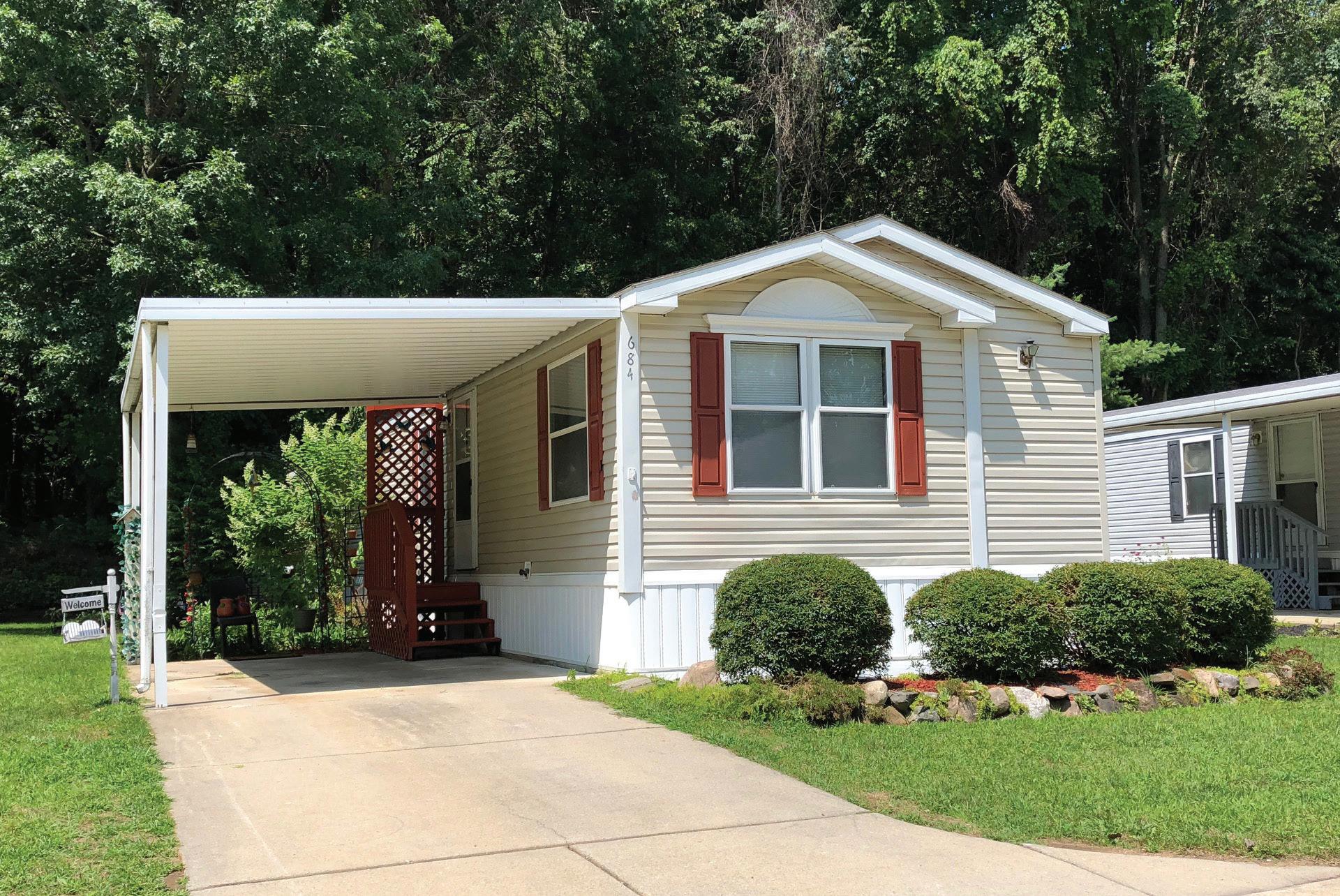
- 11 -
Freddie Mac Unwittingly Proves Its Own Failure Cont.
Freddie Mac Unwittingly Proves Its Own Failure Cont.
have provided support for only a miniscule portion of the manufactured housing real estate market, amounting to no more than 5-6% of the total HUD Code market as previously calculated by MHARR. Effectively, then, Fannie and Freddie are – and have been – subverting Congress’ prescribed remedy for the very phenomenon they now claim to suddenly discern. As a result, it’s not surprising – and should not be surprising – that the affordable housing gap that DTS was designed to remedy still exists and, as “discovered” by Freddie Mac, is still growing.


Meanwhile, rather than providing consumer financing support for affordable, mainstream manufactured homes as directed by Congress, Fannie and Freddie are instead trying to divert DTS support to significantly more costly MH Advantage, ChoiceHome and so-called “Cross-Mod” homes, produced almost exclusively by the industry’s largest corporate conglomerates. Of course, in the real world, these MH Advantage, ChoiceHome and Cross-Mod offerings have generated virtually no originations at all (much the same as their early 2000s predecessor, the “MH Select” program). But what if they did? Those originations would not, by definition, increase the level of secondary market support or securitization for affordable, mainstream manufactured homes – which was and is the entire point of DTS. Consequently, as MHARR has also stressed, these programs are not so much an “effort” to implement DTS for the mainstream manufactured housing market, as they are an effort to sidestep DTS by fundamentally altering and distorting the manufactured housing market to fit the preexisting prejudices and biases of Fannie and Freddie.
Freddie Mac’s April 15, 2021 analysis, then, purports to diagnose a problem that Freddie and Fannie have themselves helped to create – and perpetuate -- through, among other things, their continuing failure to serve the affordable mainstream manufactured housing consumer financing market as mandated by DTS. Instead, then, of claiming to “discover” a condition (i.e., the long-term shortage of affordable “starter” housing) that is and should be obvious to anyone with a pulse, Freddie and Fannie should instead be “discovering” ways to solve that problem through the full, market-significant implementation of DTS – including manufactured housing personal property loans.
That being said, and in fairness to Fannie and Freddie, there are other contributing causes to the long-term decline in manufactured housing availability, including the Government National Mortgage Association’s (GNMA) noxious “10-10” rule, which has decimated the previously thriving Federal Housing Administration (FHA) Title I manufactured housing program, and exclusionary/discriminatory zoning, which has kept affordable, mainstream manufactured housing
out of far too many communities across the United States, to the detriment of the very populations that the creators and enforcers of those provisions are sworn to represent and protect. But neither Fannie nor Freddie is in charge of – or responsible for – FHA/GNMA policy or discriminatory/ exclusionary zoning. They are, however, responsible for their own implementation of DTS and whether or not mainstream, affordable manufactured housing consumers can get access to necessary consumer financing on the same, equitable basis as other homebuyers. And it is their failure to implement DTS for affordable, mainstream manufactured housing – over more than a decade – that, in substantial part, has allowed the destructive shortage of affordable, “entry-level” single-family starter housing to grow and fester.
Instead of publicly strutting, then, over diagnosing a problem that: (1) has previously been diagnosed by Congress; and (2) should be obvious to anyone connected to the housing market, Freddie and Fannie should instead be working to address and remedy that problem. And that, in turn, means fully and effectively implementing the DTS mandate within the manufactured housing sector, in a market-significant manner. Rather than bemoaning the supply/demand gap in the market for affordable, entry-level, starter housing, Fannie and Freddie should be looking in the mirror, at their own failure to implement the remedy that Congress has already prescribed for this significant and growing problem. Instead of more excuses, now is the time to fully implement DTS for the mainstream HUD Code manufactured housing market.
- 12 -
MHARR is a Washington, D.C.-based national trade association representing the views and interests of independent producers of federallyregulated manufactured housing.
“MHARR-Issues and Perspectives” is available for re-publication in full (i.e., without alteration or substantive modification) without further permission and with proper attribution to MHARR.
Mid-year Financing Perspectives
It has been over a year since the onset of the COVID-19 pandemic, leading to an unprecedented shutdown of the country and sectors of the economy. While the past year and a half has brought tragedies and challenges not experienced previously, there is much to be optimistic about. Vaccines are being rolled out and most states have loosened or removed restrictions, enabling many people who lost their jobs as a result of the pandemic to return to work. Economic growth is expected to be further spurred going forward by the COVID relief package and future infrastructure spending. So, as we (hopefully) close out the long chapter on the coronavirus shutdown, what lies ahead for the economy and the manufactured home community (MHC) sector?
By any measure that we have seen, there is not a commercial real estate asset class that performed better than MHCs during 2020 and into 2021. A few months after the pandemic hit, a survey conducted by MHInsider of more than 200 MHC owners and operators throughout the country revealed that over 90% of rents due in May 2020 were paid on time and that there was little difference between 55-and-over communities and all-age MHCs in terms of rent collection. Additionally, as of the third quarter of 2020 the MHC public REITs reported rent collections of 97% or higher across their portfolios. The stable performance of MHCs has resulted in continued strong demand from lenders and investors as both interest rates and property cap rates remain at or near historic lows.
While other lenders aggressively pursue MHC loans, in recent years it has been the Government Sponsored Enterprises (GSEs), known individually as Fannie Mae (FNMA) and Freddie Mac (Freddie), who have defined the market in terms of general pricing and underwriting parameters. The GSEs provided a combined $7.7 billion in MHC financing in 2020, marking a staggering 97% increase over their 2019 MHC lending volume. The GSE’s MHC lending volume has grown steadily over time not only because of the favorable
By Wells Fargo Multifamily Capital

performance of MHC loans (both GSEs report no MHC loans in forbearance), but also due to a recognition by regulatory agencies that the MHC sector provides high-quality, affordable housing that is much in need. This expanded comfort zone along with low rates and available capital resulted in the GSEs’ record setting year in 2020. While fixed rate GSE loan are now being quoted in the mid-3% range, over the past year we saw some fixed rate loans well below 3%.
But because of the dominant market position of the GSEs (they accounted for nearly 50% of all outstanding multifamily mortgage debt as of the end of 2020 according to the Mortgage Bankers Association), recent regulatory changes are also playing a role going forward by establishing new requirements for MHC loans to receive the most favorable pricing. In mid-November of 2020, the Federal Housing Finance Agency (FHFA) announced new multifamily lending volume caps for the GSEs. For 2021, each GSE has a $70 billion lending cap, which represents a reduction of approximately 12.5% from the previous cap. Additionally, mission-driven, affordable business must now comprise 50% of the GSEs’ total lending volume versus 37.5% previously. In order to meet this requirement and obtain mission pricing, the FHFA now requires that MHC properties implement eight tenant pad lease protections for homeowner residents through modification of a defined percentage of leases within 12 months of loan closing. The good news is that many of these protections are already in place by State Statute and they can be implemented by amending leases or in some states by modifying the rules and regulations.
As the GSEs work through how to calibrate their monthly lending velocity within their new lending caps MHC owners who are adverse to implementing tenant pad lease protections can still obtain financing through both GSEs,
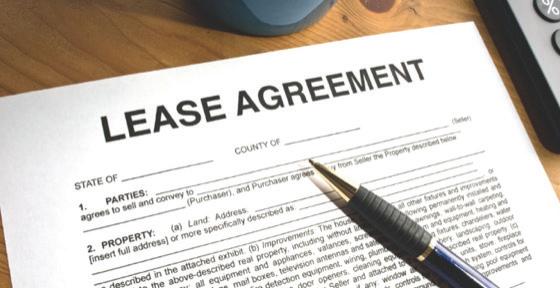
- 13 -
Mid-year Financing Perspectives Cont.
but may also find competitive loan pricing through nonGSE lending programs, particularly for loans under $5 million. With capital readily available, we expect private sector lenders to capture a higher market share moving forward this year barring any major disruption in the capital markets. CMBS, or conduit lenders, are once again back in the market and an alternative to consider if not obtaining favorable terms from a GSE lender. Banks in many markets are an available source of financing, but they often require personal recourse. Life insurance companies are also an option and offer competitive pricing, but they are typically focused on larger loans in core markets and usually more conservative on loan proceeds in comparison to the GSEs and other lenders.
2021 likely has a few surprises still in store, but MHCs are expected to continue their stellar performance. MHC owners and market participants are sure to be focused on where interest rates are headed the remainder of this year. The bond market has been nothing short of a roller coaster ride with the 10-year Treasury opening 2020 yielding 1.08% and increasing about 0.60% during the first two months of 2021. The outlook for inflation is now becoming a concern, which is not surprising given the extraordinary monetary/ fiscal stimulus policy responses to the pandemic. Some are predicting the 10-year Treasury will settle back near the 2019

average level of 2.14%, reflective of pre-pandemic rates, and we appear to be moving in that general direction. Looking back on the past 12 months we have much to be grateful for within the MHC sector, but most are ready to turn the page on this chapter.
Tony Petosa, at (760) 438-2153 tpetosa@wellsfargo.com
Nick Bertino, (760) 438-2692 nick.bertino@wellsfargo.com
Erik Edwards, at (760) 918-2875 erik.edwards@wellsfargo.com
Matt Herskowitz, (760) 918-6571 matthew.herskowitz@wellsfargo.com of Wells Fargo Multifamily Capital specialize in providing financing for MHCs through Fannie Mae, Freddie Mac, conduit, life insurance company, and balance sheet lending programs. Contact them for a copy of their “Manufactured Home Community Financing Handbook”.
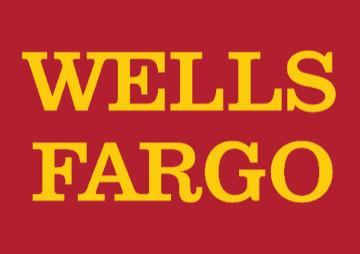
- 14 -
Titan XTERIOR Prime is a foundation cover built to withstand the demands of everyday life. Our reinforced panel design resists damage caused by lawn care accidents, playful children, and mother nature.


• Offers superior protection from high winds, frost heaving, and hail.
• Covered by a Limited 1-year No Hole Warranty, extended to 5 years upon registration.
• Panel colors include White, Dove, and Clay.
• An insulated panel is also available... Titan XTERIOR Elite.
www.stylecrestinc.com/titan-xterior | 800.945.4440 Engineered for Strength. Designed for Beauty. Designed specifically for Manufactured Homes.
prime Xterior Titan Foundation Covers | HVAC | Doors & Windows | Steps & Rails | Setup Materials | Vinyl Siding | Plumbing | Electrical
CESA Releases First National Study of Solar for Manufactured Homes
Report Identifies Opportunities for Equitable Solar Development
Montpelier, VT: Manufactured homes, formerly referred to as mobile homes, comprise over 6 percent of America’s housing stock and represent an even larger share of housing for low-and moderate-income (LMI) households. A new, two-volume report from the nonprofit Clean Energy States Alliance (CESA) argues that this market should receive targeted attention so that solar is developed equitably and more segments of society are able to realize the economic benefits from solar.
The report, Solar for Manufactured Homes: An Assessment of the Opportunities and Challenges in 14 States, provides a landscape assessment of the manufactured housing market and shows where these homes are located across the country. It explains the general obstacles to solar access by low-and moderate-income (LMI) communities, as well as additional challenges related specifically to installing solar PV with manufactured housing. It identifies the types of solar technologies that can work with manufactured housing and includes nine case studies that highlight ways in which solar can be deployed to benefit manufactured housing residents.
Dave Anderson, Executive Director of the National Manufactured Home Owners Association and a member of the report’s Advisory Committee, observes that “More than 8.5 million households live in manufactured homes. Solar has enormous potential to produce cost-savings for these low-and moderate-income families, but too often they are not even on the radar when new technologies like this are rolled out to the public.”
The report is informed by the results of surveys of solar installation companies and manufactured home residents. The second volume of this two-volume study examines the manufactured homes and manufactured housing communities in 14 states in different regions of the country, each with different housing markets and solar policies. It identifies the most promising policies and programs to bring the benefits of solar power to manufactured housing residents in each of the following states: Arizona, California, Florida, Georgia, Kentucky, Maine, Michigan, Missouri, New Mexico, North Carolina, Ohio, South Carolina, Texas, and Virginia.
By Samantha Donalds
Sara Birmingham, Senior Director for State Affairs at the Solar Energy Industries Association and a member of the report’s Advisory Committee, states that “As we think about ways to prioritize equity and expand solar accessibility to more Americans, solar on manufactured homes presents a promising new opportunity to reach lower income families. Equity and environmental justice are core values for the solar industry, and this report outlines another avenue to pursue this important work.”
The report provides eight general recommendations for the development of solar for manufactured homes:
1. Assess the manufactured housing stock in the state or utility service territory
2. Start with modest targeted efforts

3. Recognize that special funding or incentives will be necessary
4. Find the best venues for pursuing a “Solarize” strategy involving group purchasing and a community marketing campaign
5. Target resident-owned and other nonprofit manufactured housing communities
6. Promote certain types of large community-scale solar arrays
7. Support efforts to incorporate solar into new manufactured homes
8. Consider third-party ownership, on-bill financing, and other special financing

CESA Executive Director Warren Leon, the report’s lead author, points out that “The report does not shy away from the significant challenges to developing solar for the LMI manufactured homes market, but it offers key strategies to start making meaningful progress to help residents benefit from solar.”
Solar for Manufactured Homes: An Assessment of the Opportunities and Challenges in 14 States was produced by CESA as part of the Scaling Up Solar for Under-Resourced Communities Project, which is supported by the US Department of Energy Solar Energy Technologies Office.

- 16 -
CESA Releases First National Study of Solar for Manufactured Homes Cont.

Over the coming year, CESA will sponsor a learning network for state policymakers, utilities, solar industry representatives, manufactured homes associations, and other interested stakeholders who want to be invited to virtual events to learn more about solar for manufactured homes.
To receive invitations to learning network events, write to CESA Project Manager Wafa May Elamin at wafamay@cleanegroup.org.
to all. Established in 2002, CESA is a national, membersupported nonprofit that works with its members to develop and implement effective clean energy policies and programs. CESA’s members—primarily state energy agencies representing 18 states and the District of Columbia—include many of the nation’s most innovative, successful, and influential implementers of clean energy policies. Learn more at www.cesa.org
About the Solar Energy Technologies Office
The US Department of Energy’s Solar Energy Technologies Office supports early-stage research and development to improve the affordability, reliability, and domestic benefit of solar technologies on the grid. Learn more at energy.gov/ solar-office
Samantha Donalds Communications Coordinator


Clean Energy States Alliance

Ph: 508-654-5813
About the Clean Energy States Alliance (CESA) CESA is the leading US coalition of state energy agencies working together to advance the rapid expansion of clean energy technologies and bring the benefits of clean energy
Email: sam@cleanegroup.org
- 17 -
Landlord and Tenant Law Change Requires ‘HABITABILITY’
By J D Harper
In two hotly contested battles, advocates for tenants and landlords in the state sparred over a pair of bills which aimed to reform the eviction process in Arkansas while also providing assurances to renters that residential properties would be maintained under newly created minimum standards for ’habitability’ and sanitation.
An advocacy group called Arkansans for Stronger Communities, led by former University of Arkansas at Little Rock Bowen Law School professor, Lynne Foster, championed an attempt to amend the Arkansas Residential LandlordTenant Act with HB 1563, introduced by Rep. Jimmy Gazaway (R– Paragould).
Representative Gazaway’s bill was the subject of extensive debate in the House Public Health, Welfare and Labor Committee. With proponents calling safe, decent, and affordable housing a “human right” and opponents citing increased costs, liability concerns and abuse by “bad tenants” as possible problems with the measure.
Although HB 1563 was approved by the Committee on a voice vote, Rep. Gazaway chose to not present the bill to the full House - anticipating an almost-sure defeat.
In an effort to address some of the concerns brought to light by both renters and landlords, Sen. Jonathan Dismang (R-Beebe) and Rep. Spencer Hawks (R-Conway) introduced SB 594. The SB 594 would amend Arkansas’ Landlord-Tenant Act. The bill requires that residential rental properties meet minimum habitability standards, including:
SB 594 allows tenants in housing that does not meet the minimum standards to notify their landlord of any problems, and if nothing is done to fix them, the tenant may terminate the lease without penalty.


The Senate bill garnered the support of the Arkansas State Landlords Association but was criticized by tenants’ rights advocates as “not going far enough to protect renters”.
Ultimately, SB 594 passed both the Senate and the House and became law as Act #1052. At press time, AMHA’s General Counsel (Arkansas MHA’s PAC) was reviewing the new law and preparing a webinar to highlight the impact of Act #1052, particularly on community operators, developers, and retailers.
J. D. Harper, Executive Director Arkansas Manufactured Housing Association
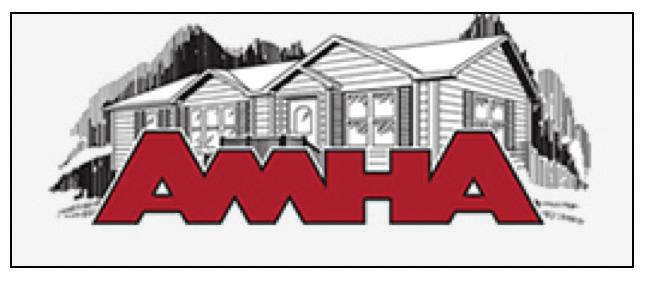
1123 South University - Suite #720
Little Rock, AR 72204
jdharper@amha.net
www.amha.net
- 18 -
Top Ten’ Lame Excuses for NOT Supporting The Manufactured Housing Council
 by J.D. Harper
by J.D. Harper
(With Apologies to TV’s David Letterman)
10. Still trying to figure out the 2021 Academy Awards
9 Bought controlling interest in ‘Satan Shoe’ line from Lil’ Nas X
8 Overspent renting armored truck to deliver lumber to jobsite
7 Too upset over the break-up of J-Lo and A-Rod
6 Made huge donation to the ‘Caitlyn Jenner for Governor’ Campaign
5 Bet that any other SEC team would sweep the ‘OmaHogs’ this year
4. Fell asleep like Sen. Ted Cruz during Biden’s first Presidential address
3 Too busy asking Hunter Yurachek to NOT RENEW Eric Musselman’s contract
2 Waiting for price reduction from factory
1 I DON’T LIKE POLITICS!
- 19 -
“Industry Advocacy Group Against Solar Energy Mandates for Manufactured Homes”

WASHINGTON, D.C., MAY 26 - The Manufactured Housing Association for Regulatory Reform (MHARR) has issued a strong warning to a special interest group against any effort to seek solar energy mandates for federally-regulated manufactured homes.

On May 4, 2021, the group – the “Clean Energy States Alliance” (CESA) – published a two-volume report specifically addressing the utilization of solar energy in manufactured homes as part of a “Scaling-Up Solar for Under-Resourced Communities” project supported by a U.S. Department of Energy (DOE) funding award. Not coincidentally, as MHARR has previously reported, DOE is under a federal court order to develop and adopt “energy efficiency” standards for manufactured homes pursuant to the so-called Energy Independence and Security Act of 2007 (EISA), by no later than February 14, 2022.
In its May 21, 2021 communication to CESA, MHARR states that while it has no objection to the voluntary utilization of solar power and solar power devices by manufactured homeowners as a matter of choice within their sole and exclusive discretion, or conversely, to manufactured home retailers and/or producers offering solar energy packages as an option for homebuyers who might wish to purchase such a system for a new home, it will aggressively oppose any effort to seek or promote any type of governmental mandate (under any guise) for the utilization of solar power or solar power devices in HUD Code manufactured homes as a primary energy source. This would similarly apply to any effort to seek or promote construction-related government mandates for frame, structural, or other components of new HUD Code manufactured homes related to solar power and/or devices.
Throughout its existence, MHARR has consistently opposed efforts by special interest groups to strip American consumers of their free choice to the full range of features and amenities that manufactured homes can offer with unparalleled affordability, and instead coerce them via legislation or regulation into costly “one-size-fits-all” approaches favored by the special interests. And nowhere in the current-day regulatory environment, is this a more pressing concern than with respect to energy and energy-related measures.
Put simply, it is – and should be – up to homebuyers, within their sole and exclusive judgment and discretion, to decide what type(s) of energy sources or devices they wish to use in their home, based on their own wants and desires, their own financial capabilities, and their own needs. As a federally regulated industry, current laws are designed to foster and
By MHARR
protect this type of free choice for manufactured home purchasers, and MHARR is wholly dedicated to ensuring that these good laws are fully and faithfully followed in order to protect and advance the interests of HUD Code consumers, as well as the smaller businesses that are the traditional core of the HUD Code industry.
1331 Pennsylvania Ave N.W., Suite 512
Washington D.C. 20004
Phone: 202/783-4087
Fax: 202/783-4075
MHARR@MHARRPUBLICATIONS.COM
ManufacturedHousingAssociationRegulatoryReform.org
- 20 -
Manufactured Housing Association for Regulatory Reform (MHARR)
The Manufactured Housing Association for Regulatory Reform is a Washington, D.C.-based national trade association representing the views and interests of independent producers of federally regulated manufactured housing.
Importance of Rental Approval Standards
Good rental approval standards help attract and keep good tenants while discouraging prospective tenants with a history of irresponsible behavior from applying. All landlords should have an established screening process. Start with creating screening criteria that you will apply consistently to each applicant. Having consistent screening criteria makes the screening process easier and keeps landlords from inadvertently discriminating against an applicant. Below are samples to get you started.
• Income Policy - The applicant’s rent plus home payment shall not exceed 30% of applicant’s total gross household income.
• Rental History – Minimum of ____ years of rental history required. In the absence of sufficient rental history, a co-signer will be required. (Home mortgage history is acceptable, as well.)
• No Evictions – No person will be approved who has a court ordered eviction within the past ____ years.
• Credit History – A credit report is required which shall reflect a habit of prompt payment of debts and no unsatisfied judgments. Landlord reserves the right to require a co-signer if negative items are in the credit report. (Good idea to set a credit score threshold.)
• Verification of Employment – The applicant shall have verifiable income and/or employment. The applicant shall have a minimum of _________ (months or years) of continuous income at the time of application. If the applicant’s income is based on retirement income, disability income, or any other lawful source of income, the applicant shall provide proof of income.
• Judgment – Judgment for a financial delinquency to a landlord or mortgage company is grounds for denial of the applicant.
• Criminal Background – No person who within the last ___ years has been convicted of: violence to persons, destruction of property, and/or a drug related crime (the manufacture or distribution of a controlled substance).
• Co-Signers – All co-signers shall meet the same criteria as applicants regarding credit references and a record of timely payment of debts. The co-signer is only agreeing to guarantee payments for the term of the rental agreement
By Angie Diedrich
unless specified in the Co-signer Agreement. The landlord is not obligated to offer the applicant the co-signer option.
• These are just a start. If you are a member, check out the Model Rental Approval Standards on the Forms & Tools page under Community Owner Resources. Having rental approval standards posted on your website or to hand out with an application will help applicants know what is needed to rent in your community and possibly even have less applications you need to deny.
Check out all the application process documents we have on the Wisconsin Housing Alliance on the Forms & Tools page under Community Owner Resources. We are here to help if you have question on what to put on your rental approval standards.

 Angie Diedrich Finance Director Angie@housingalliance.us
Angie Diedrich Finance Director Angie@housingalliance.us

- 21 -
Definition of a “Contractor” Shrinks While the Definition of an “Employee” Expands
Prior to leaving office, the Trump administration filed a regulation designed to simplify the definition of which workers are employees versus contractors as defined by the Fair Labor Standards Act. In many cases, it would have broadened the definition of a Contractor as well. The regulation was to take effect on March 8th, 2021 . However, the Biden Administration sought to delay its effective date. After further review, the proposed regulation change was withdrawn. The U.S. Secretary of Labor, Marty Walsh said, “Too often, workers lose important wage and related protections when employers misclassify them as independent contractors.”
From a business owner’s perspective, this means the definition of which workers are classified as employees remains broad. The workers’ classification as either an “employee” or “contractor ” remains defined by a review of the totality of circumstances of the working relationship. The key factor remains whether the worker is economically dependent on work with the hiring party. Other factors include how they are paid, how their taxes are paid, whether they control their own time schedule, if they do work for others, if they use their own tools, if they deploy skills or education learned independently of work, and the amount of control the hiring party retains over their work.
Business managers should be careful to properly categorize and pay workers. Employees are to be compensated under the Fair Labor Standards Act where minimum wage, hours worked, and overtime rules apply. Improper payment by the employer can result in fines, an award of back pay and legal fees. Furthermore, in almost every state, it is required that employees be covered by workers compensation insurance Employers that do not carry this insurance are still required to pay benefits provided by workers compensation insurance when workers are hurt on the job.


While there are multiple penalties for misclassifying employees as contractors, outside of additional administrative costs, there are no penalties for misclassifying contractors as employees. Managers should seek to properly classify these workers; lean toward calling workers employees rather than contractors and carry workers compensation insurance if you have any employees. When contract work is the obvious choice and no insured contractors are available, consider
By Kurt D Kelley, J D
adding the workers as employees to have them covered by your workers compensation insurance while they are on the job.


- 22 -
Kurt D. Kelley, J.D., President of Mobile Insurance, a leading provider of commercial insurance to manufactured home community, operators, and retailers.

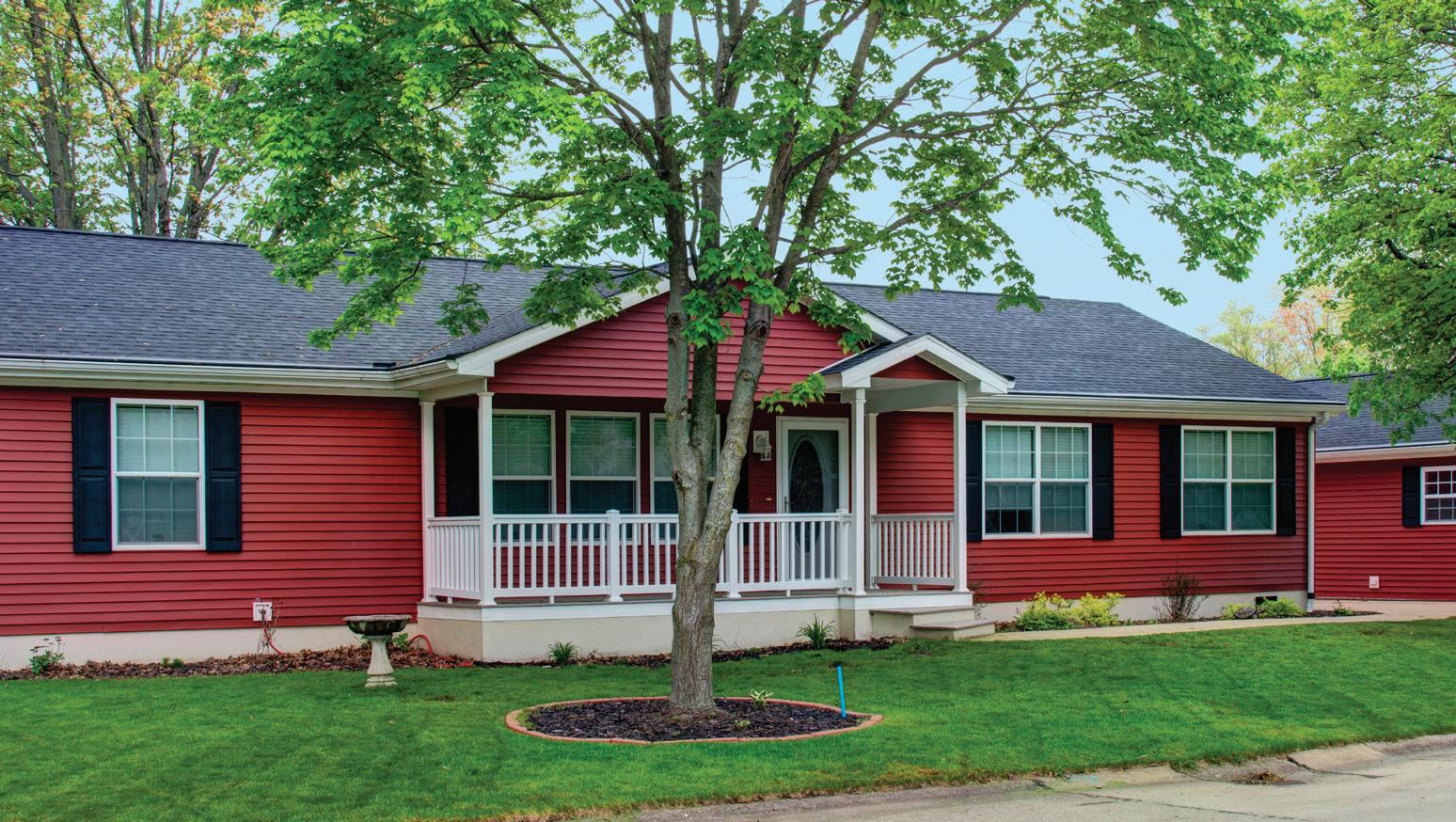
- 23 -
Supply-Side Factors Weigh on Texas’ Manufactured Housing Industry Optimism
COLLEGE STATION, Tex. (Texas Real Estate Research Center)
Prices paid for raw materials soared for the fourth consecutive month, according to the latest Texas Manufactured Housing Survey (TMHS), with a spike in supply-chain disruptions and increased regulatory burden.
Rob Ripperda, vice president of operations for the Texas Manufactured Housing Association (TMHA), noted, “The U.S. Department of Housing and Urban Development (HUD) announced building-code changes in January that were scheduled to go into effect on March 15, forcing manufacturers to gear up for making a switch while also dealing with supplier shortages and lengthy backlogs. Fortunately, HUD has extended the effective date of implementation to July 21, giving manufacturers time to recover from the impacts of both the pandemic and Winter Storm Uri.”
While manufacturers do not expect additional regulation in the next six months, there are no signs of reduced pricing pressure. Moreover, manufacturers observed slower growth in the labor supply as well as higher labor costs.
Survey data indicate a sluggish start to the spring season, with the volume of new orders and sales flattening. Backlogs remained elevated but showed initial signs of improving through summer.
“We still aren’t seeing much reduction in supply-chain bottlenecks,” said Dr. Harold Hunt, research economist at the Texas Real Estate Research Center (TRERC) at Texas A&M University. “This is becoming a significant drag on the manufacturing process from end to end. If companies can’t make informed decisions about product deliveries to and from their factories, we may see more business uncertainty in the months ahead.”

This sentiment was reflected in the March TMHS as the uncertainty index worsened for the second straight month. While industry optimism has waned during the first quarter, the overall outlook remains positive across the industry.
TRERC and TMHA partner to produce a monthly survey of business conditions and expectations surrounding the manufactured housing industry.
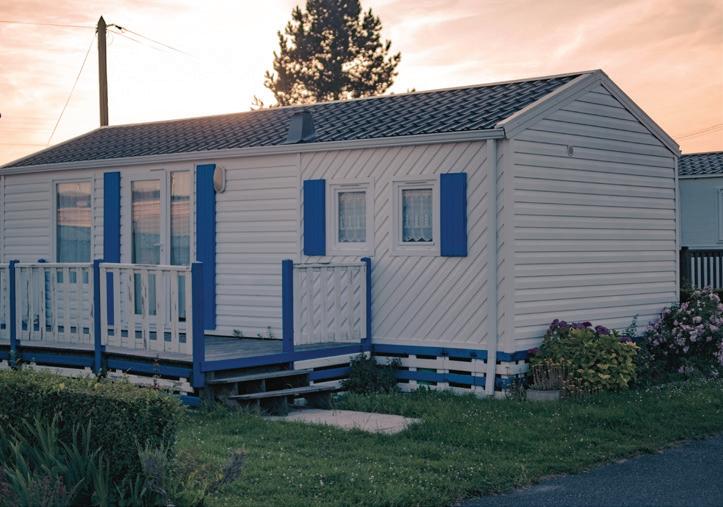 By David Jones
By David Jones
Funded primarily by Texas real estate licensee fees, the Texas Real Estate Research Center was created by the state legislature to meet the needs of many audiences, including the real estate industry, instructors, researchers, and the public. The Center is part of Mays Business School at Texas A&M University

Thousands of pages of data are available at the Center’s website. News is also available in our twice-weekly electronic newsletter RECON, our Real Estate Red Zone podcast, our daily NewsTalk Texas feed, on Facebook, on Twitter, on LinkedIn, and on Instagram.
To request a free press subscription to our quarterly flagship periodical Tierra Grande magazine, contact David Jones.
David Jones
d-jones@tamu.edu
Director of Center Communications
Texas Real Estate Research Center
Since joining the Marketing, communications, media relations staff at the Texas Real Estate Research Center in 1975, David’s credits include creating Tierra Grande magazine, RECON, Total RECall, and the calendar format for the Center’s annual report. He has two degrees from Texas A&M University and is and IABC Accredited Business Communicator. He has won more than 100 communication honors, including a Katie Award from the Dallas Press Club and the Anson Jones Award from the Texas Medical Association. He is past president of the College Station Noon Lions and is a member of the club’s Hall of Fame.

- 24 -
National Tenant Eviction Moratorium Halted
During the Spring of 2020, Congress with the approval of the Trump Administration enacted a 120-day tenant eviction moratorium that applied solely to rental properties receiving federal-backed loans or federal renter assistance programs. After that expired, on September 4, 2020, the Centers for Disease Control (CDC) issued a broader tenant eviction moratorium that applied nationwide to all rental properties. Including extensions issued by both Congress and the CDC, the order was extended through June 30, 2021. The CDC order also added criminal penalties including fines up to $500,000 and jail time up to one year for landlords that violate their edicts.
The CDC order states that landlords cannot evict nonpaying tenants who claim they have a financial hardship and were unsuccessful in applying for government rental assistance. The CDC claimed that public health issues surrounding COVID would be worsened if people could be evicted from their rental homes.
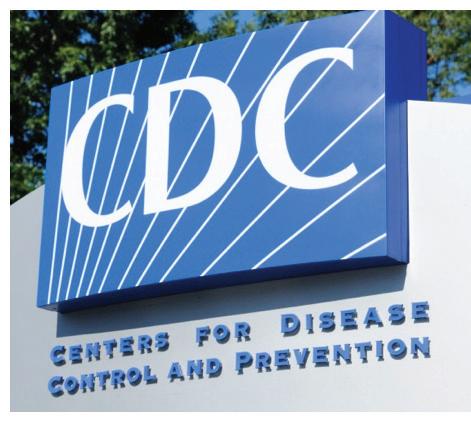
However, the US District Court Judge Dabney Friedrich of the US District Court for the District of Columbia ruled that the CDC does not have the authority to impose a national eviction moratorium. The CDC eviction moratorium is thus no longer in place. The ruling did not address damages suffered by landlords related to uncollected rent and the effective uncompensated taking of their property resulting from the illegal government agency order. The CDC edict was set to expire at the end of 2020, but it was extended through June of 2021. The ruling is effective immediately, but subject to appeal.
The ruling states, “Because the plain language of the Public Health Service Act unambiguously forecloses on nationwide eviction moratorium, the court must set aside the CDC order.” This ruling applies across the country and follows multiple similar rulings by many lower courts. Authorities from the Biden administration argued in favor of the CDC’s authority to issue this order. They also tried to get the Judge to limit the ruling in favor of only the named plaintiff landlords, the Alabama
By Manufactured Housing Review Staff
and Georgia Associations of Realtors et. al., but this effort was unsuccessful, too. The Biden administration has appealed this ruling and is seeking an immediate reinstatement of the ruling pending the outcome of this appeal.

Prior to this Federal decision that currently applies nationwide, some states and jurisdictions had already ruled the CDC’s power grab to be illegal. The government says that the number of renters behind on rent payments is about three times the average. Manufactured home community managers are not reporting that large of an increase in non-paying tenants.

Proponents for the eviction moratorium claim that evictions worsen the spread of COVID. They help make possible local government stay at home orders and guarantee a place to stay for those suffering from the disease or who are at high risk of severe illness from it.
Proponents against a moratorium on evictions claim they cripple landlords financially, are an unconstitutional taking of their property, and deprive them of their rights of due process and access to the courts. Those against the eviction moratorium further claim that citizens have received ample government assistance intended to help pay rent during the pandemic. Current pending federal legislation purports to provide an additional $50 billion in rental assistance.
The Manufactured Housing Institute posted this statement on the ruling, “MHI will continue working with its coalition of national housing industry organizations to strongly argue that the current approach of eviction moratoriums is failing to address the scope of damage in the housing sector and will not meet the long-term need of renters and housing providers. We will also continue to urge states to distribute their emergency rental assistance funds as quickly and simply as possible.”
Staff Manufactured Housing Review staff@manufacturedhousingreview.com
- 25 -
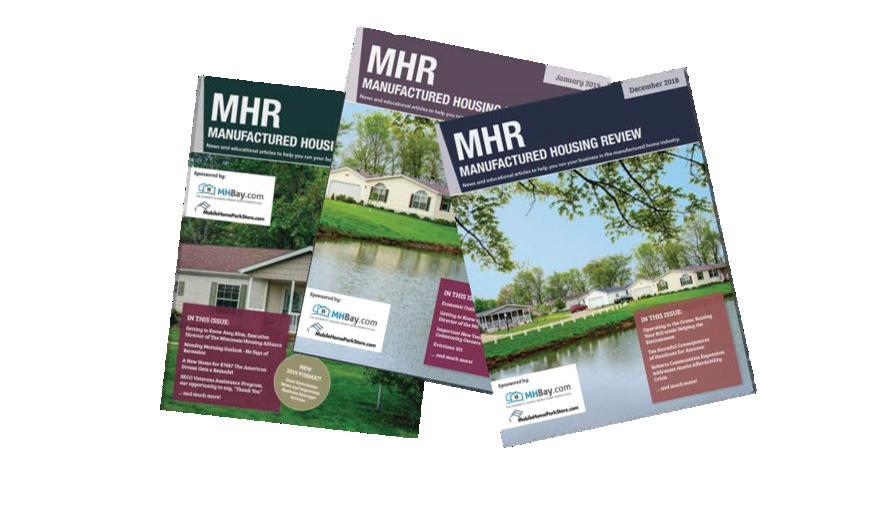
MHR MANUFACTURED HOUSING REVIEW We are an electronically delivered quarterly magazine focused on the Manufactured Housing Industry. From Manufactured Home Community Managers, to Retailers, to Manufacturers, and all those that supply and service them, we supply news and educational articles that help them run their businesses. ManufacturedHousingReview.com Communications regarding any alleged offending, inappropriate, inaccurate or infringing content should be directed immediately to kkelley@manufacturedhousingreview.com along with the communicator’s contact information. Have something to contribute or advertise? Email us at staff@manufacturedhousingreview.com




















 By Mark J Fletcher, ENP
By Mark J Fletcher, ENP























 by J.D. Harper
by J.D. Harper



 Angie Diedrich Finance Director Angie@housingalliance.us
Angie Diedrich Finance Director Angie@housingalliance.us








 By David Jones
By David Jones





